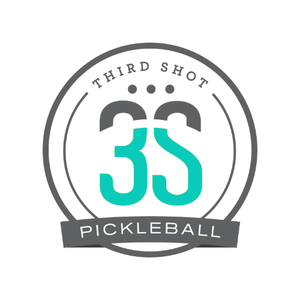As a pickleball coach it is exciting to see more people taking seriously the idea of practicing. The explosion of instructional videos on YouTube (including those from yours truly) seems to suggest that people are eager to not just play pickleball, but to play it better. This is a good thing for the growth of the game and pickleball’s shift toward mainstream sport.
I am often curious to see how people choose to organize their practice sessions — whether it is a loose 30 minutes before open play or the more structured clinics arranged by coaches. How is it set up? What do they work on? What drills do they do? This article proposes a few things to think about when planning how you practice.
Are the drills effective? Good practice sessions are focussed practice sessions. They should identify a particular situation or skill and seek to work on it repeatedly.
If, for example, you’re choosing to work on your overhead smash, you should not be spending much time at the back of the court. You shouldn’t be hitting many serves or returns since that’s not your focus. Here’s a helpful question to ask yourself: “out of the last 20 balls I hit, how many were the exact shot I’m supposed to be working on?”. If the answer is less than 10, your drill is not very effective. You’re spending more than half your time not working on the thing you’re supposed to be improving! Time to change the drill.
Do you have the right degree of challenge? Practice sessions are meant to help you improve but if the drill is too easy — or too hard — that won’t happen. The sweet spot for challenge is typically between 60% and 70% success. Any less and the drill is too tough and you’re failing as often as you’re succeeding. Any more, it is too easy and not pushing you to be better. So, how can you adjust the degree of difficulty?
Change the target — Whether you are using cones, markers, lines or some other way to define a space, make it bigger to make the drill easier, smaller to make it tougher.
Change the feed — The ball you receive influences the shot you send. Make the feed slower and more manageable if you need to make the drill less challenging. Make it harder to receive if you need to increase the degree of difficulty.
Add movement — Hitting while standing still is easier than having to chase a ball to hit it. So if you need to make the drill a little easier, do it without requiring much movement. As your success increases, set it up so you have to chase the ball before you hit it.
Introduce consequences -- Real games penalize you for missing and once you’ve developed a skill, your drills should too! Adjust the rules of your drill so that there are consequences for missing (e.g. lose two points if you hit in the net; push-ups for unforced errors, etc.). Train yourself to play under pressure.
Are the drills realistic? One of the most important aspects of a good drill — and the most difficult to maintain — is to make the drill realistic. The point of practicing is to help you play the game of pickeball better so it is important that your drills mimic game-like situations as much as possible.
Let’s say you are working on dinking. Dinks are smart shots when you are at the kitchen and the ball is below net level but they are dumb shots when the ball is sitting up high above the net. The smart play in this case is something else — a powerful drive. If in your effort to practice dinking you dink back even the high balls (the ones you would normally hit hard in a game) you’re now practicing making a bad decision. You’re training yourself to do the wrong thing! It would make more sense if each time a ball was hit too high, you simply caught it and reset the dinking drill.
Making a drill realistic is one of the most difficult things to do. Here’s a checklist of things to look at in order to assess whether your drills passes the realism test:
what game-like situation am I trying to simulate?
am I standing in the right place for this situation?
is my partner standing in a realistic spot?
does the shot I’m hitting make sense? Would I do this in a game?
Designing great drills and practice sessions is harder than it looks. There will be many false starts and times you say to yourself, “I don’t think this is working”. That’s fine. As your experience in drilling increases you’ll start to build a library of your favourite drills for working on different situations. The key is to try to plan ahead and be willing to change it up if your drill isn’t working.
A final tip is to become really good at copying other people. If someone introduces a drill to you that seems really effective, remember it (write it down) and use it again later. All the best coaches I know are excellent drill thieves!
Mark Renneson is a pickleball coach and 5.0 player. He lives in Collingwood, Ontario, Canada and is the founder of Third Shot Sports. If you’d like to share your thoughts on this article or anything else pickleball related, he can be reached at mark@thirdshotsports.com
